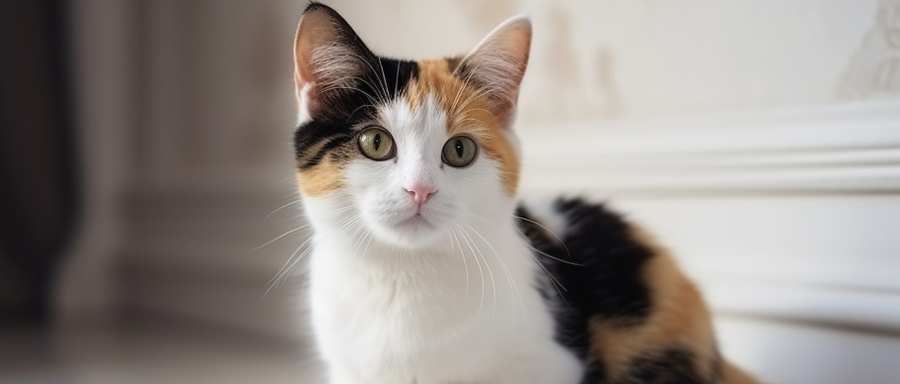Choosing the right cat litter for diarrhea involves considering absorbency, odor control, and comfort for your feline friend.
When it comes to our furry companions, their health and comfort are paramount. One common issue that cat owners face is diarrhea, which can be distressing for both the pet and the owner. Finding the right cat litter during such times can make a significant difference. The right litter can help manage messes effectively while ensuring your cat feels comfortable using their litter box.
Understanding Diarrhea in Cats
Diarrhea in cats can stem from various causes, including dietary changes, infections, or underlying health issues. It can lead to discomfort and stress for your pet. Managing this condition involves not just addressing the root cause but also making life easier for both you and your cat.
The type of litter you choose plays a crucial role in how well you can manage these situations. A suitable litter will absorb moisture quickly, control odors effectively, and provide a comfortable surface for your cat.
Key Features of Cat Litter for Diarrhea
When searching for effective solutions, several key features should be prioritized:
Absorbency
High absorbency is vital when dealing with diarrhea. Litters that clump quickly help contain messes and prevent them from spreading throughout the box. Clumping litters absorb moisture efficiently, making cleanup easier.
Odor Control
Diarrhea can produce strong odors that linger if not managed properly. Choosing a litter with excellent odor control properties helps maintain a pleasant environment in your home.
Comfort
A soft texture is essential for cats who may be feeling vulnerable due to digestive issues. Some litters are made from materials that are gentle on paws, reducing any discomfort when they use the box.
Dust-Free Options
Dust-free litters are preferable as they minimize respiratory irritants for both cats and humans. Cats with sensitive systems may benefit from low-dust formulas.
Types of Cat Litter Suitable for Diarrhea
There are several types of cat litter available on the market today. Each type has its pros and cons when it comes to handling diarrhea.
Clay-Based Litters
Clay-based litters are among the most popular options due to their high absorbency and clumping ability. Sodium bentonite clay is commonly used because it forms solid clumps upon contact with moisture, making cleanup straightforward.
Pros:
- Excellent absorbency
- Strong odor control
- Easy to find in stores
Cons:
- Can be dusty
- Not environmentally friendly
- Some cats may dislike the texture
Natural Litters
Natural litters are made from materials like corn, wheat, or recycled paper. These options tend to be more environmentally friendly and often have good absorbency.
Pros:
- Biodegradable
- Usually low dust
- Soft texture for sensitive paws
Cons:
- May not clump as well as clay
- Can have varying odor control capabilities
Crystal Litters
Crystal litters, typically made from silica gel crystals, offer excellent moisture absorption without clumping. They work by absorbing liquid into the crystals rather than forming clumps.
Pros:
- Great at controlling odors
- Long-lasting; requires less frequent changing
- Low dust production
Cons:
- Some cats may not like walking on crystals
- Can be more expensive than traditional options
Top Brands of Cat Litter for Diarrhea
After considering various factors such as absorbency, odor control, and comfort level, certain brands stand out as top choices:
| Brand | Type | Key Features |
|---|---|---|
| Tidy Cats | Clay | Strong clumping action; excellent odor control |
| World’s Best Cat Litter | Natural | Made from whole-kernel corn; great absorbency |
| PetSafe ScoopFree | Crystal | Low maintenance; absorbs moisture without clumping |
| Dr. Elsey’s Precious Cat | Clay | Low dust; excellent odor control |
| Ökocat | Natural | Made from reclaimed wood; biodegradable |
Transitioning to New Cat Litter
Switching to a new type of litter—especially during episodes of diarrhea—requires some care to ensure your cat adjusts smoothly. A sudden change might deter them from using their box altogether.
1. Gradual Introduction: Start by mixing the new litter with the old one in small increments over several days.
2. Monitor Reactions: Keep an eye on how your cat reacts to the new litter texture or scent.
3. Maintain Cleanliness: Ensure that the litter box is kept clean during this transition period to encourage use.
Cleaning Tips During Diarrhea Episodes
Cleaning up after a cat with diarrhea can be challenging but manageable with a systematic approach:
1. Immediate Cleanup: As soon as an accident occurs, it’s best to clean it up immediately before odors set in.
2. Use Gloves: Wearing disposable gloves while cleaning helps maintain hygiene.
3. Disinfect Thoroughly: Use safe disinfectants on surfaces that come into contact with waste.
4. Frequent Box Changes: During illness periods, consider changing the litter more frequently to maintain hygiene.
Monitoring Your Cat’s Health
While choosing the best cat litter is essential during episodes of diarrhea, monitoring your cat’s overall health should also be a priority:
1. Dietary Adjustments: Sometimes dietary changes can help firm up stools—consulting with a vet about this is always wise.
2. Hydration: Ensure your cat stays hydrated during bouts of diarrhea.
3. Veterinary Care: If diarrhea persists beyond 24 hours or worsens significantly, seeking veterinary care is crucial.
Conclusion – What Is The Best Cat Litter For Diarrhea?
Choosing what is best involves understanding your cat’s specific needs during uncomfortable times like diarrhea episodes. High absorbency combined with effective odor control makes clay-based litters an excellent choice for many owners dealing with messy situations caused by their feline friends’ digestive troubles.
Natural options also present viable alternatives while being kinder to our planet—a factor many pet owners increasingly consider today.
Ultimately, each cat has unique preferences—some might prefer softer natural litters while others might stick to traditional clay types. Whichever option feels right will ensure not only cleanliness but also comfort for our beloved companions during their tough times!

